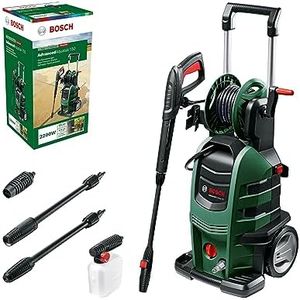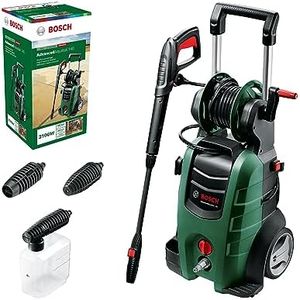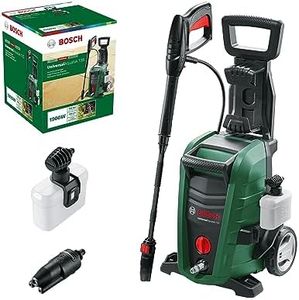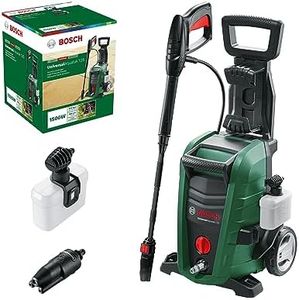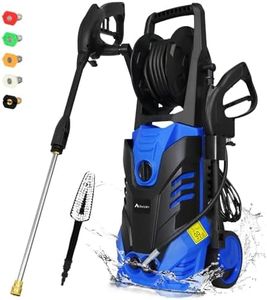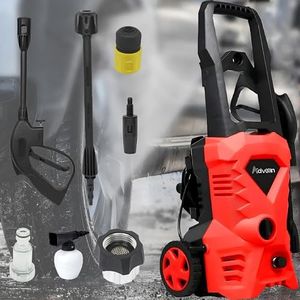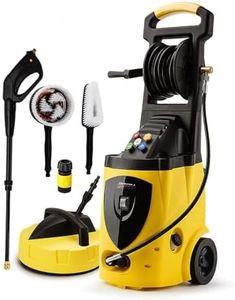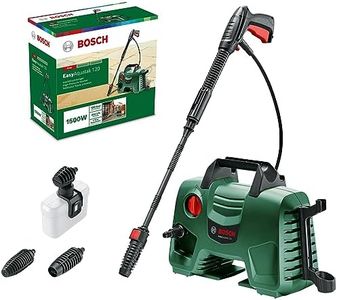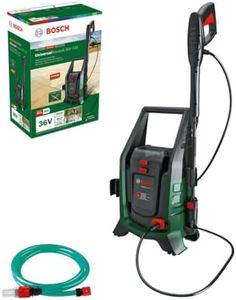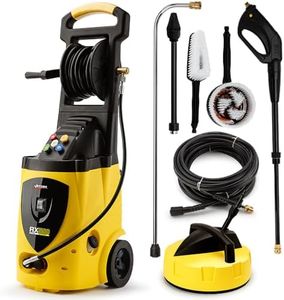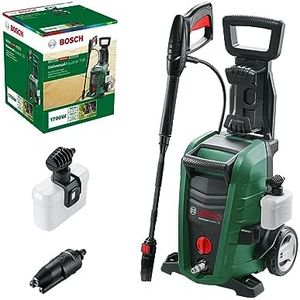We Use CookiesWe use cookies to enhance the security, performance,
functionality and for analytical and promotional activities. By continuing to browse this site you
are agreeing to our privacy policy
10 Best Electric Power Washers
From leading brands and best sellers available on the web.Buying Guide for the Best Electric Power Washers
Choosing the right electric power washer can make outdoor cleaning tasks much quicker and easier. The best fit for you depends on the kinds of surfaces you'll clean and how often you plan to use the washer. Before anything, consider where you’ll plug in the power washer, what you’ll clean (like cars, patios, decks, or siding), and how comfortable you are with handling water pressure. Focus on matching your cleaning needs with the washer’s capabilities to get reliable performance and ease of use.Pressure (PSI)PSI (pounds per square inch) measures the power washer's water pressure. It tells you how forcefully the water will hit the surface. Higher PSI means stronger cleaning force, making it easier to remove tough stains or clean harder surfaces. Basic washers start around 1300-1800 PSI, which is suitable for small jobs like washing cars, bicycles, or outdoor furniture. Mid-range models in the 1800-2500 PSI range can handle patios, fences, and decks. Heavy-duty electric models go up to about 3000 PSI and are good for driveways or heavily soiled surfaces. Pick a PSI based on what you’ll clean most often: lower PSI for delicate surfaces, and higher PSI for tough jobs.
Water Flow Rate (GPM)GPM (gallons per minute) is the amount of water the washer uses in a minute. This matters because higher flow rates can clean larger areas faster by pushing more dirt away. Most electric power washers range from 1.2 to 2.5 GPM. Lower GPM (1.2–1.6) saves water and is fine for light cleaning, while higher GPM (around 2.0–2.5) is better for faster cleaning of larger or very dirty surfaces. If time and cleaning speed matter for you, or if you'll clean big spaces, opt for higher GPM.
Portability and SizeThis spec considers how easy the washer is to move and store. Smaller, lighter models are easier to carry, use, and store if you don’t have much space, but might have lower power. Larger models may have wheels or handles for easier transport but could be bulkier. Choose a size based on your storage area, how far you’ll move the washer, and your own ability to carry or maneuver it.
Cord and Hose LengthThe length of the power cord and water hose determines your reach without moving the washer or unplugging it often. Standard electric washers usually have cords from 25 to 35 feet, and hoses about 20 to 30 feet. For larger areas or when outlets are far away, longer cords and hoses provide more flexibility. Choose longer lengths if you’ll work in big outdoor spaces or prefer less moving around while cleaning.
Nozzle Options and AdjustabilityNozzles control the shape and intensity of the water spray. Most washers come with multiple nozzle tips or an adjustable nozzle. Wider spray angles (like 40 degrees) are gentle and good for light cleaning or sensitive surfaces, while narrow angles (like 0 or 15 degrees) concentrate power for stubborn stains. Having several nozzle options lets you clean safely and effectively without damaging surfaces. Pick a washer with a range of nozzle choices if you plan to clean different objects or materials.
Detergent SystemSome power washers have built-in tanks or attachments for soap or detergent, which helps with deep cleaning. Systems range from simple siphon hoses to onboard tanks. Onboard tanks are more convenient for frequent detergent use and less messy. If you expect to wash cars, vinyl siding, or heavily soiled areas, consider a model with a detergent system that’s easy to fill and clean.
